biotechrabbit™ lyophilized CAPITAL qPCR Probe Mix is a freeze-dried version of the well-established liquid equivalent. The stabilized format allows shipment and storage without cooling. The master mix is optimized for quantifying genomic, cDNA and viral sequences provides outstanding performance in single and multiplex qPCR. The high sensitivity provided by the mix is ideal for detection of low-abundance DNA targets in various applications, such as pathogen detection. CAPITAL qPCR Probe Mix uses proprietary combination of enzyme and buffer chemistry for efficient extension and early Ct in single and multiplex qPCR.
Info: Recommended annealing temperature is 2°C above primer Tm (use gradient PCR to optimize the annealing temperature).
Component | Composition |
Lyo CAPITAL qPCR Probe Mix | Cake of lyophilized 4× qPCR Probe Master Mix |
qPCR Probe Reconstitution Buffer | Optimized PCR buffer for reconstituting lyophilized CAPITAL qPCR Probe Mix |
LYO Master Mix RECONSTITUTION | 1) Transfer the whole content of one vial qPCR Mix Reconstitution Buffer to one vial Lyo CAPITAL qPCR Probe Mix |
STORAGE | Store at room temperature or below (until expiry date – see product label) |
Quality Control
Functional assay
Mix tested functionally in qPCR.
Notes
- For efficient amplification under fast cycling conditions use amplicon lengths between 80 bp and 200 bp.
- The shorter the amplicon length the faster the reaction can be cycled.
- Amplicon lengths should not exceed 400 bp.
- Primers should have a predicted melting temperature of around 60°C, using default Primer 3 settings (http://frodo.wi.mit.edu/primer3/).
- For TaqMan® probes choose probe close to 5’ primer, avoid terminal guanosine residues.
Prevention of PCR contamination
When assembling the amplification reactions, care should be taken to eliminate the possibility of contamination with undesired DNA.
- Use separate clean areas for preparation of samples and reaction mixtures and for cycling.
- Wear fresh gloves. Use sterile tubes and pipette tips with aerosol filters for PCR setup.
- Use only water and reagents that are free of DNA and nucleases.
- With every PCR setup, perform a contamination control reaction that does not include template DNA.
Basic Protocol
- Keep the master mix protected from light until you use it.
- Aliquot the master mix to minimize freeze-thaw cycles and light exposure.
- Thaw on ice and mix very well all reagents. Assemble and keep all reactions on ice.
- Use only high quality optically clear reaction plates and seals designed for fluorescence applications.
- Do not use corner wells or use a more robust seal.
- Reserve plate positions for positive (control DNA) and negative (water or buffer) controls.
- First pipette the primer mixture, then add the template and last the Master Mix.
- Before preparing mixes, calculate the volume needed according to the reaction number plus one extra.
- To have a better correlation, run the reactions in triplets.
Component | Volume | Final concentration |
Primer Mix (Reverse and Forward) | Variable | 100–400 nM |
Too high primer concentrations result in unspecific amplification and should be avoided. | ||
Specific Probe | Variable | 200 nM |
Template DNA | Variable | 10 pg – 100 ng |
Use diluted or undiluted cDNA from less than 1 µg RNA | ||
CAPITAL qPCR Probe Mix, 4× | 5 µl | 1× |
Nuclease free water | Variable |
|
Total volume | 20 µl |
|
- Gently mix the reactions without creating bubbles (do not vortex). Bubbles will interfere with fluorescence detection.
- Place the reaction into the PCR cycler.
Cycling Program
Step | Temperature | Time | Cycles |
Initial activation | 95°C | 2-3 min | 1 |
Denaturation | 95°C | 10–15 s | 40–45 |
Annealing/Extension* | (60-68°C) | 30 s |
*Recommended annealing/extension temperature is primer Tm +2°C. Use gradient PCR to optimize the annealing temperature. Do not use temperatures below 60°C. Do not exceed 30 seconds.
For melt analysis refer to instrument instructions.
You may also be interested in the following product(s)
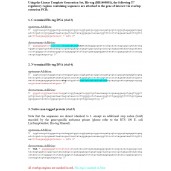
RTS 100 E. coli LinTempGen Set, His-tag
Package Sizes |
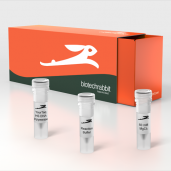
YourTaq™ Hot-Start DNA Polymerase, 5 U/µl
Package Sizes |
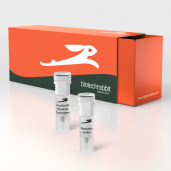
AnyScript™ Reverse Transcriptase, 200 U/µl
Package Sizes |
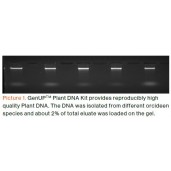
GenUP™ Plant DNA Kit
Package Sizes |
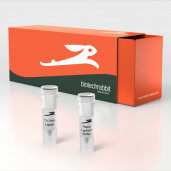
T4 DNA Ligase Rapid, 600 U/µl
Package Sizes |
